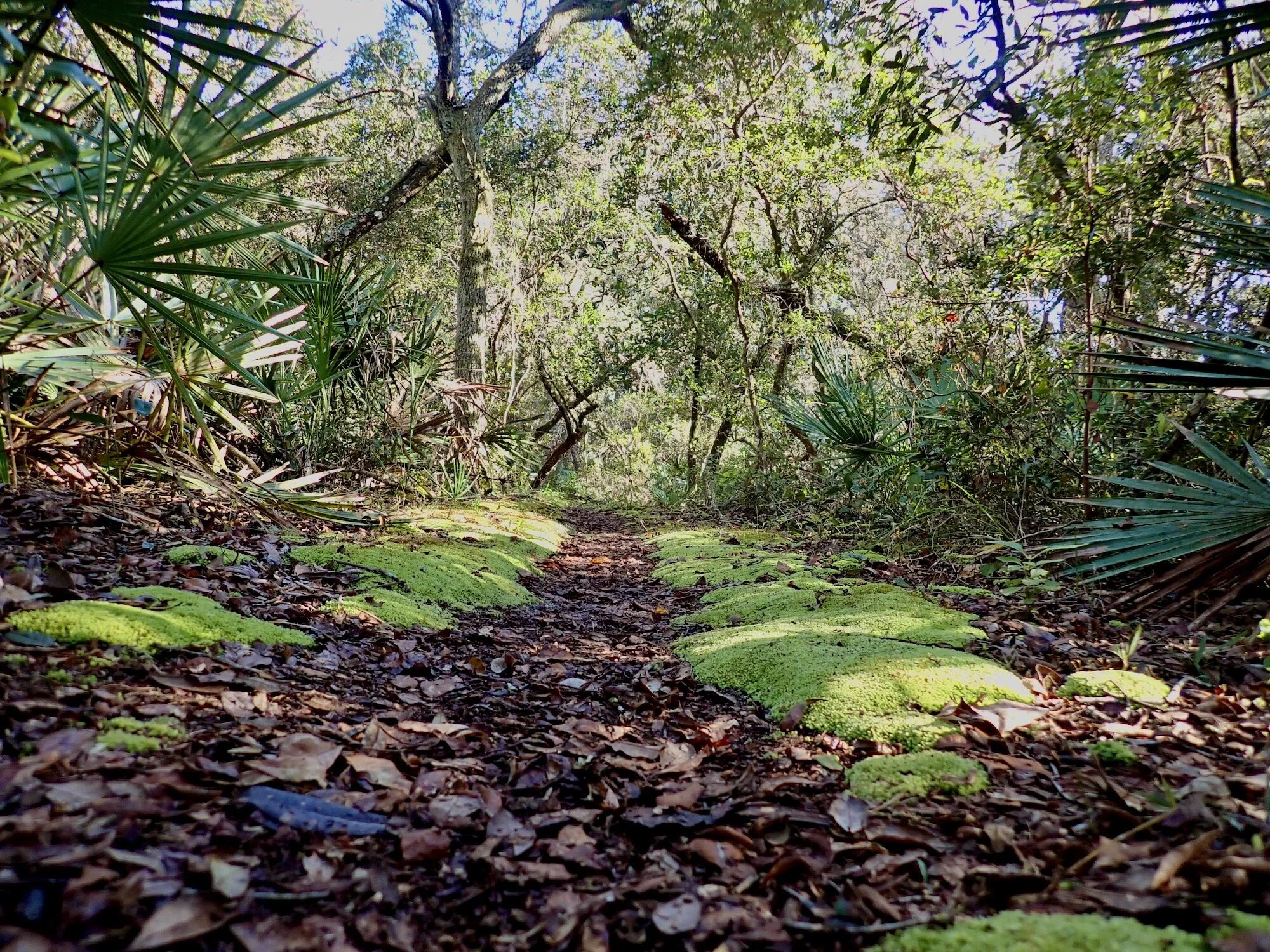Walking The Florida Trail
By: John Kumiski
The Florida Trail has many beautiful sections. This is a particular pleasant section of the trail, near Snow Hill Road. Photo: John Kumiski
The Florida Trail (FT) runs for approximately 1,500 miles through Florida, from Big Cypress National Preserve to Fort Pickens at Gulf Islands National Seashore, in Pensacola. By Congressional action, it's also known as the Florida National Scenic Trail. The FT provides continuous, permanent, non-motorized recreation opportunities for hiking and other compatible activities, while showcasing Florida's rich biodiversity, history, and culture. Most Floridians live within an hour's drive of the FT.
Florida possesses a unique range of environments that cannot be seen anywhere else in the world. The FT offers amazing wildlife and nature viewing opportunities. Passing through both urban and remote wilderness areas, the trail traverses a variety of semi-tropical ecosystems. From swamps to forests to prairies to springs, you’ll find endless habitat exploration opportunities. The FT even traverses several miles of beach in the Florida panhandle, one of the few trails in North America to do so.
Anywhere the trail passes water, you might see alligators. Be wary! Photo John Kumiski
I'm fortunate. The trail passes within a five-minute walk from my home. I use the trail in the vicinity of my central Florida home for day hikes. Several decades ago I moved to Florida from New England, where I enjoyed backpacking in the mountains. I did not, and do not, enjoy backpacking in Florida. I know people do, because I run into them on the trail. Roughly 75-100 people through-hike the Florida Trail every year, taking between eight and 12 weeks to do so.
You'll see these berries in the fall. They're lovely, and edible, but not tasty. Photo: John Kumiski
Timing your walk properly makes or breaks it, too. Florida summers are not hiker friendly. Heat, downpours, lightning, and blood-sucking arthropods, including ticks and chiggers, make hiking more of a survival test than an enjoyable outdoor activity. Take those walks when the weather is cool, from around Thanksgiving to Easter.
During winter, Florida gets cold fronts, and temperatures can drop below freezing. If you're out during the winter, take steps to protect yourself from cold as well as heat. Carry lots of water and be prepared for insects and sun exposure. Of course, you'll be carrying a first aid kit.
That Thanksgiving to Easter time frame puts you in the woods during hunting season. When hunters with rifles are looking for deer, either wear blaze orange or stay out of the woods.
I've never run into unsavory individuals while on the FT, but have no doubt people do. Stay aware of your surroundings and follow your instincts. Females should always hike with friends. Hiking with friends for safety reasons is always a good idea, regardless of your gender. That way you have a safety net if you get ill or injured. Filing an itinerary with a reliable friend is recommended as well.
A gulf fritillary feeds on a Spanish needle blossom. Both look pretty beat up. Photo John Kumiski
Along the trail you find what the Florida Trail Association (FTA) calls Gateway Communities. These towns offer food, accommodations, a post office, and other amenities, which are especially appreciated by through-hikers. Local business that are hiker-friendly have FT badges displayed. It's good to know where you can send and pick up mail, wash clothes, and maybe get a hot shower! And ice cream!
These mud bridges were built with pressure treated 4x4s. Nice! Photo: John Kumiski
Florida topography tends towards flatness, producing low areas that don't drain well. Regardless of where you hike, expect mud and possible standing water. The mud bridges here are the only ones I've used that are made with pressure-treated lumber instead of split logs from the vicinity of the trail!
Poison ivy loves Florida. You'll see plenty of it. Know what it looks like, and avoid it.
Perhaps I've stressed the negative too much. Like anywhere else, the chances of something bad happening are low.
Usually you'll have amazing times while walking on the FT, and see incredible things, both plants and animals! For much more information and a general route map of the FT, visit the Florida Trails Association website at https://www.floridatrail.org.
A 1,500-mile trail cannot possibly build and maintain itself. The FT is a product of the successful collaboration between the USDA Forest Service, land-managing partners, dedicated volunteers, and staff from the Florida Trail Association (FTA), who recognize the need for long-distance hiking opportunities in Florida and come together to create, improve, and steward the trail.
These large spiders often build their webs across the trail. Walking into one will get your attention, right now! Photo John Kumiski
The USDA Forest Service is the administrator of the FT, charged with planning routes, overseeing development, and establishing partnerships to complete the trail. The National Forests in Florida and the FT Coalition, an advisory group of public and private partners, work collaboratively to close the last remaining gaps and establish permanent protection along the entirety of the Florida Trail.
Every county through which the trail passes has a FTA chapter. These chapters are made up entirely of volunteers. They are the ones who keep the trail open, cutting out deadfalls, building bridges and boardwalks, painting blazes, and keeping the trail passable; all of it hard, physical work. If you run into a trail crew while you're out, let them know how much you appreciate their efforts. Consider donating to or joining the FTA.
When out on the Florida Trail, please enjoy your walk, but don't play with anything that can bite you.
John Kumiski is a has been fishing, exploring, and enjoying the outdoor for 40 years. He was a longtime fishing guide in FL. He is the author of Fishing Florida by Paddle-An Angler’s Guide, which can be purchased HERE.








